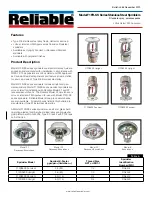
27
© Airflow - We reserve the right to make changes without prior notice
DV51 DV51CH
Always follow first and foremost the connection diagram provided
by the HVAC designer or heat pump manufacturer . Also read the
Brine heat exchanger .
The accompanying figure shows an example of the arrangement
for connecting the heating/cooling radiator unit to the heat
collection circuit .
Connect the radiator output pipe to the heat collection circuit return
pipe. Direct the fluid returning from the radiator unit to the heat
collection circuit return pipe . If you know that there is a large loss
of internal pressure inside the heat pump, the heat pump should be
bypassed. If this is done, the fluid circuit will come into operation
when the heat pump comes to a halt . When this happens the
pressure loss in the one-way bypass valve Y2 must be lower than
the pressure loss in the heat pump .
Heating:
The pump starts when the outdoor air temperature drops
below the winter limit value set at the factory (-5 °C) .
Cooling
The supply air setpoint value for the active mode (for
example, At home) controls the pump start-up . The pump starts
when the supply air setting is below the temperature of the supply
air that is blown into the apartment .
The duct radiator can be installed in both the supply air duct
and the outdoor air duct . If the radiator is installed in the outdoor
air duct, it can be used for both preheating and cooling, or for
preheating or cooling alone .
The Brine heat exchange can be set to function either automatically
or manually .
• Automatic
- In summer, the supply air temperature will be
maintained at the level specified in the temperature setting. In
winter, the Brine heat exchanger will turn on, when the outdoor
temperature falls below the winter setting .
• Manual
- In summer, the Brine heat exchanger will turn on,
when the outdoor temperature rises above the summer setting .
In winter, the Brine heat exchanger will turn on, when the
outdoor temperature falls below the winter setting .
To prevent the risk of condensation in the supply air duct, you can
set the adjustment of the supply air limit to automatic or manual .
• Automatic
- The supply air limit is adjusted automatically
based on the dew point of the extract air . When the supply air
temperature falls too low, the Brine heat exchanger will turn off .
• Manual
- The supply air limit can be set manually . When the
supply air temperature falls down to the set value, the Brine
heat exchanger will turn off .
If an external sensor is in use, it is selected from the settings of
the external sensor whether it is used to control the outdoor air
Brine heat exchanger or the supply air Brine heat exchanger .
NOTE:
If the brine heat
exchanger is used in
the supply air duct, it
can only be used for
cooling .
NOTE:
When used to
control the outdoor air
Brine heat exchanger,
the external NTC
sensor is installed in the
outdoor air duct before
the radiator . When used
to control the supply air
Brine heat exchanger,
the external NTC
sensor is installed after
the radiator .
NOTE:
When selecting the
relay (C), take account
of the maximum
allowed combined
power supply (6W)
of the circuit board in
the external electrical
box, if the relay power
supply comes from the
circuit board’s +24V
connector .
NOTE:
Due to the risk of
humidity damage, in
a duct that has not
been insulated for
condensation the
supply air temperature
must not fall below +16
… 20 °C .
BRINE HEAT EXCHANGER
TECHNICAL
SPECIFICA
TIONS





































